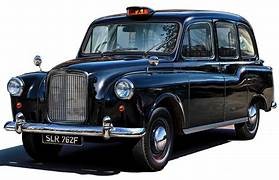
Multiple Intelligences Newsletter, Vol 34, No 4
March 13, 2025

Hi Friends,
I absolutely guarantee that you’ll find this newsletter interesting. I promise!
One of the reasons that I was initially drawn to the theory of MI is that it focuses on human potential. Too often in education, sadly, we work to identify students’ weaknesses and then work to shore them up. I get that; we cannot overlook deficits. But that should only be a portion of the ways in which we view students. We also need to recognize students’ strengths and enable them to use these talents in learning. An example of an often overlooked strength follows…
How do London taxi drivers illustrate
the theory of multiple intelligences?
Well, Howard Gardner did not simply identify his set of intelligences on a whim. Rather, he developed a very pragmatic set of criteria. There are seven criteria, “including the existence of prodigies, savants, and exceptional individuals” as well as “supported psychometric and psychological tasks.” Examining each of these criteria for intelligence would lead to a fascinating discussion and new insights about intelligence and life.

For now, though, I want to focus on one of his intelligence criterion, “isolation as a brain function.” That’s where the London cabbies come in!
An obituary in the February 16, 2025 New York Times, “Eleanor Maguire, 54, Memory Expert Who Studied London Cabbies Dies” (p. 28) by Michael S. Rosenwald, caused me to think about the spatial intelligence. The obituary says Maguire was “a cognitive neuroscientist whose research on the human hippocampus – especially those belonging to London taxi drivers – transformed the understanding of memory, revealing that a key structure in the brain can be strengthened like a muscle.” Wow!
The article notes that Dr. Maguire never drove because she always got lost, and she wondered how some people could be so good at finding their way around London. (I’ve been to London and I share her wonderment.) Of course, she identified London taxi drivers as people who were never lost. In a study, she and her colleagues scanned some taxi drivers’ brains while asking them about the shortest routes between places. And “The results, published in 1997, showed that blood flow in the right hippocampus increased sharply as the drivers described their routes – meaning that specific area of the brain played a key role in spatial navigation.” Yes, this affirms one of Gardner’s intelligence criteria, the fact that intelligences can be identified with a certain location in the brain.
She then compared the size of the taxi drivers’ hippocampus with people who were not taxi drivers. Get this: “The posterior hippocampi of taxi drivers were significantly larger relative to those of (people who were not taxi drivers)” and “The longer the cabby had driven, the bigger the hippocampus.” That’s evidence that we can grow our intelligences, increase our MI, through focus and effort. It’s obvious here and it’s true for ALL of the intelligences. Teachers who recognize students’ array of intelligences and who teach with and through those intelligences do just that! That’s why identifying and respecting students’ MI is so powerful in education.
Finally, not that I’m a Luddite, mind you, but what impact will the pervasiveness of GPS directions and maps have on our spatial intelligence? If we can find one another, let’s discuss!
Now then, how could teachers enable students to use their spatial intelligence in learning?
Thanks for reading. I would love to hear from you. And don’t get lost!
TOM
Thomas R. Hoerr, PhD
Facilitator of the MI Network
This newsletter, now thirty-four years old, originated from ASCD. You can learn more about ASCD and its offerings at www.ascd.org.
